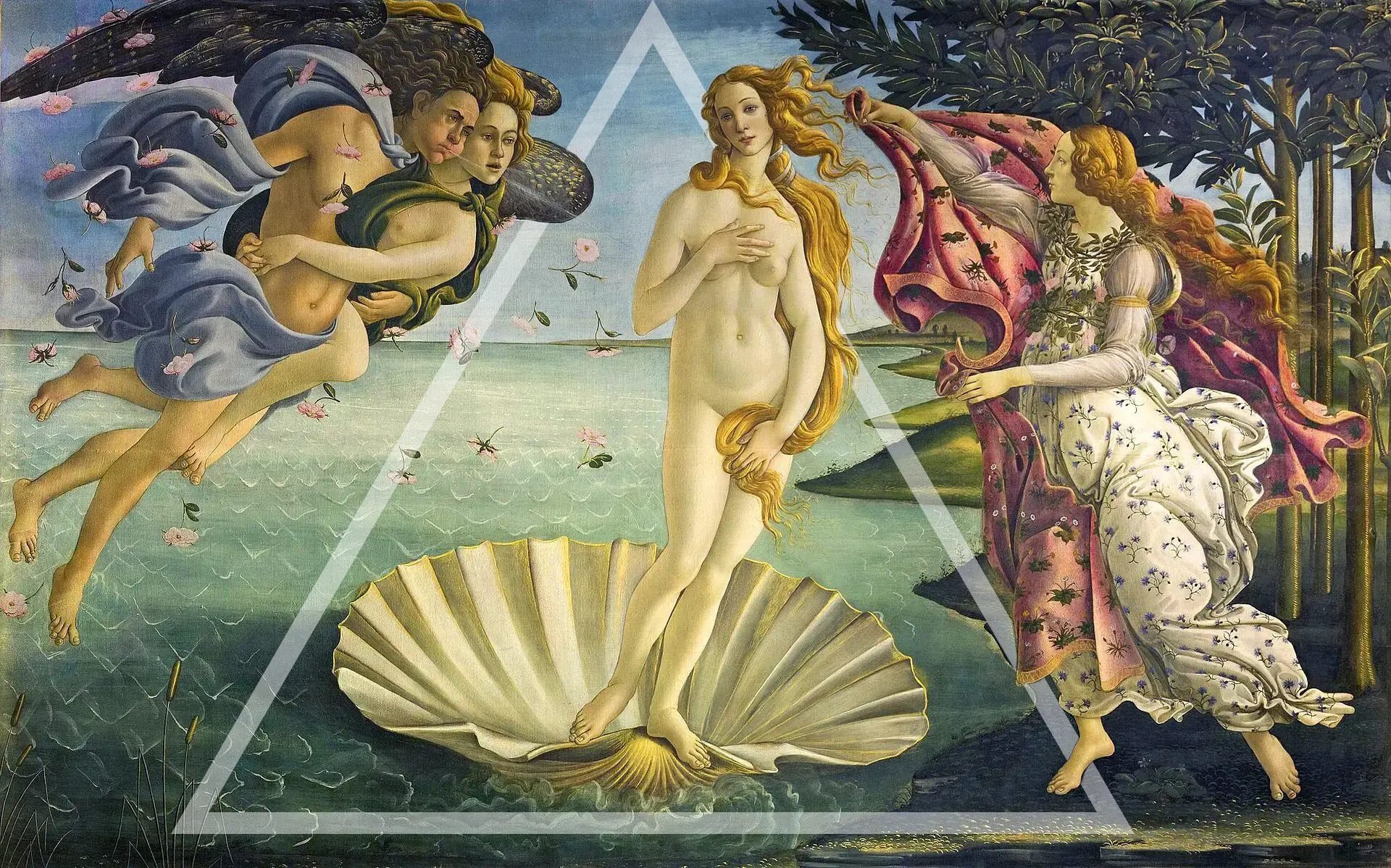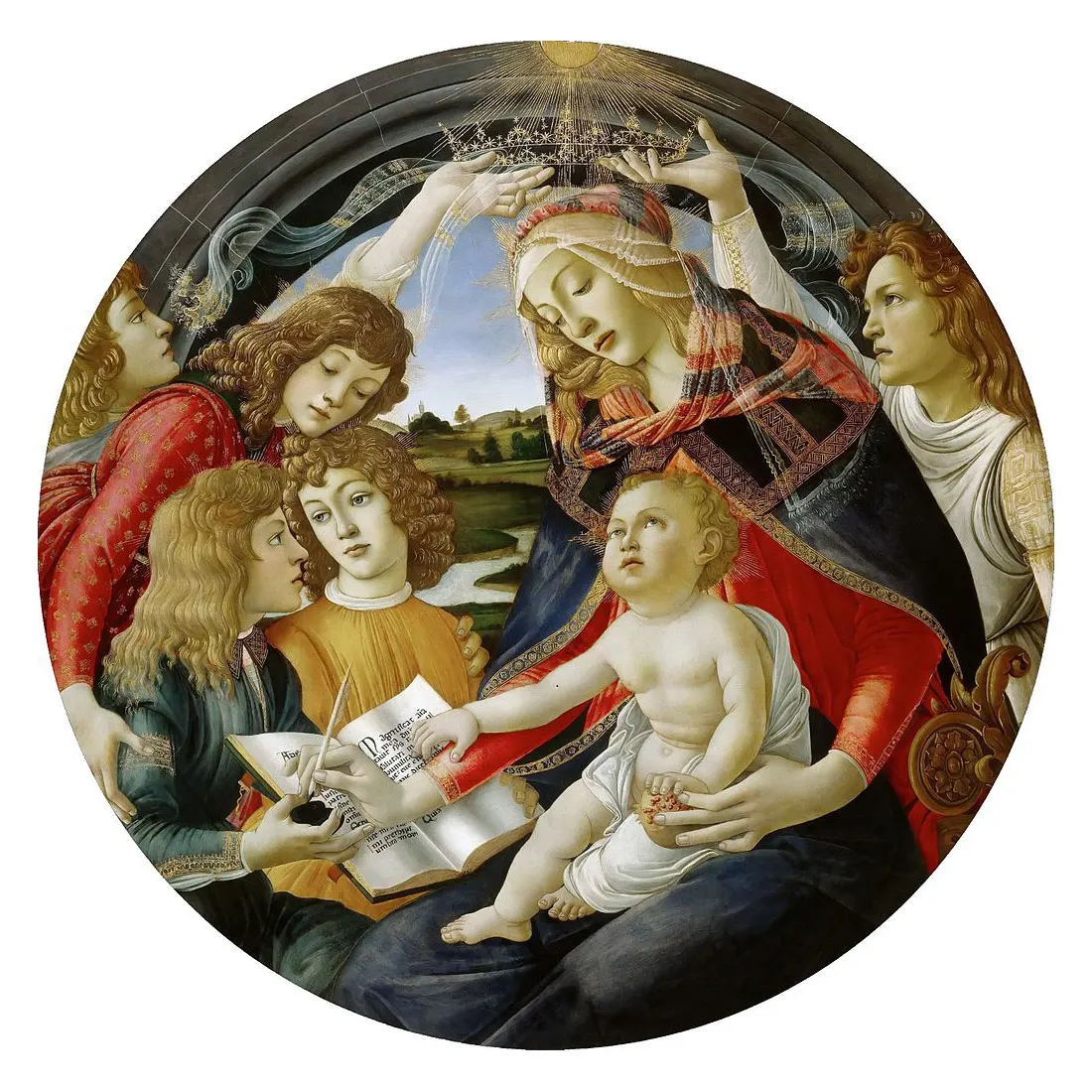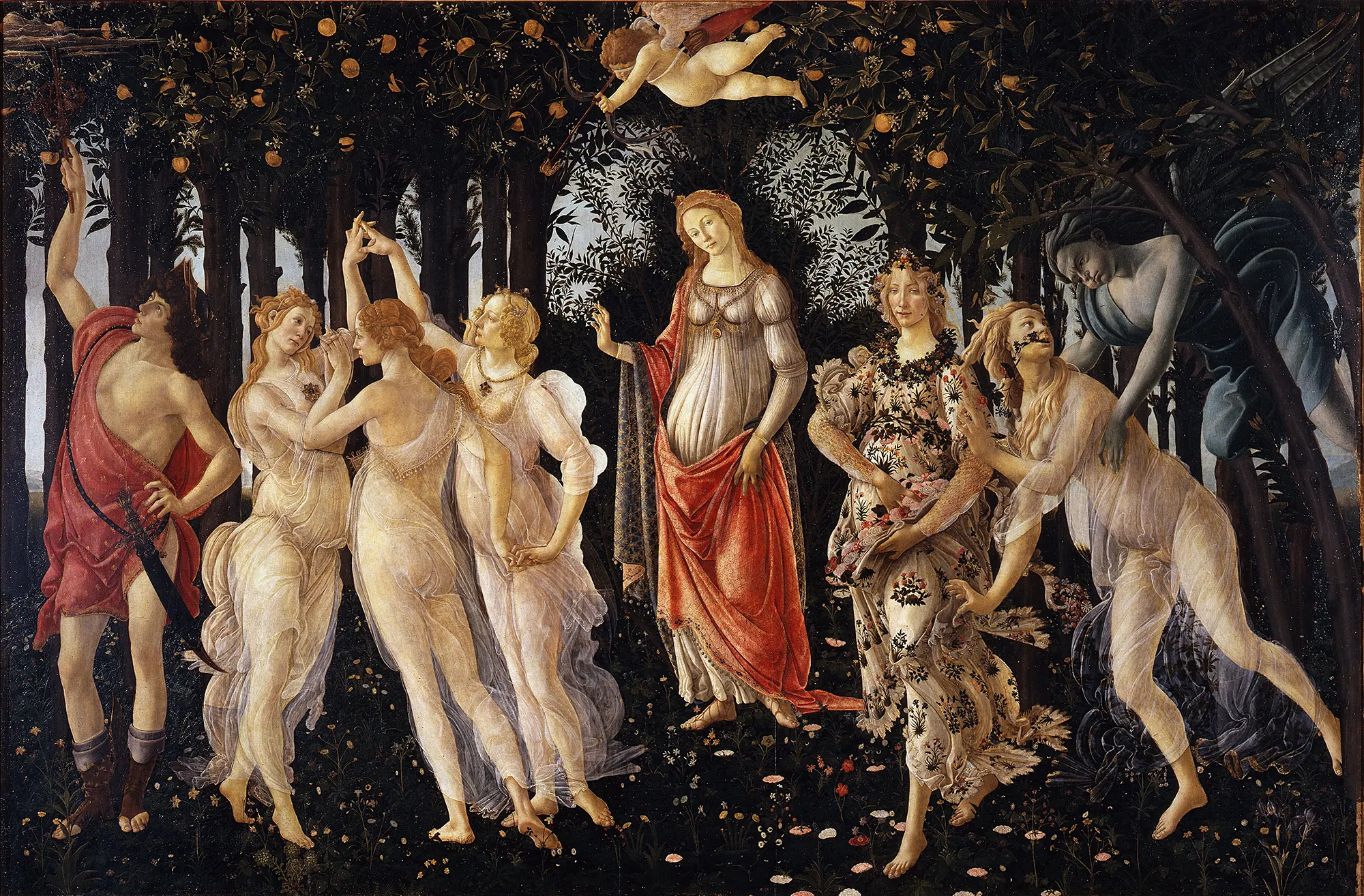Venus (also known as The Birth of Venus) and Primavera are two iconic Renaissance paintings by Sandro Botticelli that are an expression of Neoplatonic philosophy. Neoplatonism, emerged in the 3rd century AD, was revived during the Renaissance and heavily influenced art, literature, and thought. It emphasized the connection between the physical and spiritual realms, the ideal of beauty, and the divine nature of love.
Botticelli was influenced by the Neoplatonic philosophy promoted by the Medici family and the Florentine Platonic Academy, led by thinkers like Marsilio Ficino and Giovanni Pico della Mirandola. In fact, his paintings are a continuous search to reveal the mystery of natural and spiritual Beauty.


Simonetta Vespucci, a noblewoman from Genoa who married into the Vespucci family of Florence, is often considered Botticelli’s muse. She was renowned for her beauty and was celebrated by many artists and poets of the time.
Lorenzo de Medici wrote at his death:
O bright star that with your rays
take away the light from the nearby stars,
why do you shine much more than your custom?
Why do you still want to compete with Phoebus?
Perhaps the beautiful eyes, which you have taken from us
cruel death, which now presumes too much,
you have gathered in you: adorned with their divinity,
you can ask for his beautiful chariot from Phoebus.
O this, or new star that you are,
that adorn the sky with new splendor,
called hear, oh god, our prayers:
lift of your splendor so much,
that to the eyes, that have zeal for eternal weeping,
without other offense you show yourself happy.
The Birth of Venus
Primavera, an allegory of the Soul’s journey toward Divine Love, with Venus as the guiding force
Behind the figure of Venus who is pregnant, the plants draw two “lungs” made of air; natural love must be complemented by celestial and divine love. Through love the human being touches God in time and outside of time.
- Venus: The central figure, representing love and beauty. She stands in a grove of orange trees, symbolizing purity and eternal love.
- The Three Graces: symbolize beauty, charm, and joy, reflecting the Neoplatonic belief in the transformative power of beauty and its connection to the divine.
- Mercury: On the far left, he disperses the clouds with his caduceus, symbolizing the arrival of spring and the protection of the garden.
- Flora: The figure scattering flowers, symbolizing the blossoming of spring.
- Chloris and Zephyrus: On the right, Zephyrus, the wind god, chases Chloris, a nymph, who transforms into Flora, the goddess of flowers, symbolizing the renewal of nature.
- Cupid: Above Venus, blindfolded and aiming his arrow, representing the unpredictability of love.
